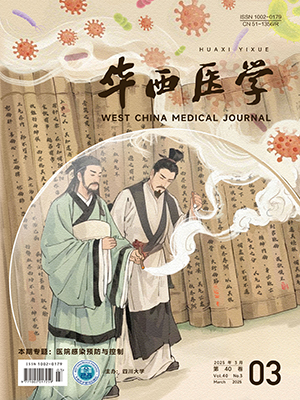| 1. |
Reginster JY, Burlet N. Osteoporosis:a still increasing prevalence[J]. Bone, 2006, 38(2):4-9.
|
| 2. |
Melton LJ, Atkinson EJ, Cooper C, et al. Vertebral fractures predict subsequent fractures[J]. Osteoporos Int, 1999, 10(3):214-221.
|
| 3. |
Gronholz MJ. Prevention、diagnosis and management of osteoporosis-related fracture:a multifactoral osteopathic approach[J]. Am Osteopath Assoc, 2008, 108(10):575-585.
|
| 4. |
余雷, 罗二平, 申广浩, 等. 低频脉冲电磁场治疗骨质疏松的作用[J]. 中国临床康复, 2003, 7(12):1801-1802.
|
| 5. |
Watts NB, Bilezikian JP, Camacho PM, et al. American Association of Clinical Endocrinologists Medical Guidelines for Clinical Practice for the diagnosis and treatment of postmenopausal osteoporosis:executive summary of recommendations[J]. Endocr Pract, 2010, 16(3):1-37.
|
| 6. |
Reid DM, Hosking D, Kendler D, et al. A comparison of the effect of alendronate and risedronate on bone mineral density in postmenopausal women with osteoporosis:24-month results from FACTS-International[J]. Int J Clin Pract, 2008, 62(4):575-584.
|
| 7. |
Markov MS. Magnetic field therapy:a review[J]. Electromagn Biol Med, 2007, 26(8):1-23.
|
| 8. |
Ehatjfulelhan G, Festa MA, Angelete JE. Reproducibility of DXA absorp-tiometry:a model for bone loss estimates[J]. Bone Miner Res, 1995, 10(7):1004-1014.
|
| 9. |
Miller PD. Guidelines for the diagnosis of osteoporosis:T-scores vs fractures[J]. Rev Endocr Metab Disord, 2006, 7(1-2):75-89.
|
| 10. |
Chang WH, Chen LT, Sun JS, et al. Effect of pulse-burst electromagnetic field stimulation on osteoblast cell activities[J]. Bioelectromagnetics, 2004, 25(6):457-465.
|
| 11. |
Bassett CAL, Pilla AA, Pawluk RJ. A nonoperative salvage of surgically-resist antpseudarthroses and non-unions by pulsing elecromagnetic fields:a preliminary report[J]. Clin Orth op, 1977, 12(124):128-143.
|
| 12. |
Sert C, Mustafa D, Duz MZ, et al. The preventive effect on bone loss of 50 Hz, 1mT electrom agnetic field in ovariectomized rats[J]. Bone Miner Metab, 2002, 20(6):345-349.
|
| 13. |
Giavaresi G, Fini M, Gnudi S, et al. Giardino. Effect of pulsed electromagnetic fields on ovariectomized rats[J]. Electro-Magnetobiol, 1998(18):119-131.
|
| 14. |
黄礼群, 王维, 何成奇, 等. 不同治疗时间脉冲电磁场对去势大鼠股骨骨密度的影响[J]. 中国修复重建外科杂志, 2008, 22(5):548-550.
|
| 15. |
高堪达, 俞永林, 周建伟. 脉冲电磁场治疗骨质疏松症研究进展[J]. 国外医学·骨科学分册, 2004, 25(5):307-309.
|
| 16. |
Tabrah FL, Ross P, Hoffmeier M, et al. Clinical report on long-term bone density after short-term EMF application[J]. Bioelectromagnetics, 1998, 19:75-78.
|
| 17. |
肖登, 杨霖, 雷中杰, 等. 不同治疗时间脉冲电磁场对去卵巢大鼠股骨生物力学性能的影响[J]. 四川大学学报·医学版, 2010, 41(2):296-298.
|
| 18. |
Weintraub MI, Herrmann DN, Smith AG, et al. Pulsed electromagnetic fields to reduce diabetic neuropathic pain and stimulate neuronal repair:a randomized controlled trial[J]. Arch Phys Med Rehabil, 2009, 9(8):1102-1109.
|
| 19. |
Ay S, Evcik D. The effects of pulsed electromagnetic fields in the treatment of knee osteoarthritis:a randomized, placebo-controlled trial[J]. Rheumatol Int, 2009, 29(6):663-666.
|
| 20. |
郝双林, 田宝斌, 王玲, 等. VAS测痛法的临床初步评估[J]. 中国医学科学院学报, 1994, 16(5):397-399.
|
| 21. |
胡一顺, 史玲, 鲍志民, 等. 低频脉冲电磁场治疗骨质疏松症骨痛症状疗效观察[J]. 上海医药, 2012, 33(6):46-47.
|
| 22. |
Snow S, Kirwan JR. Visual analogue scales:a source of error[J]. Ann Rheum Dis, 1988, 47(6):526.
|
| 23. |
郝双林. 临床疼痛的测定方法及其评价[J]. 国外医学·麻醉学与复苏分册, 1993, 14(4):228-230.
|
| 24. |
张权, 黄煌渊. 降钙素治疗骨质疏松性疼痛的短期疗效评估[J]. 上海医科大学学报, 2000, 11(1):27-29.
|
| 25. |
Smith TL, Wong-Gi bbons D, Maultsby J. Microcirculatory effects of pulse electromagnetic fields[J]. Orthop Res, 2004, 22(1):80-84.
|
| 26. |
周万松. 新编磁疗学[M]. 北京:科学出版社, 1995:50-58, 130-151.
|
| 27. |
Greenough CG. The effects of pulsed electromagnetic fields on blood vessel growth in the rabbit ear chamber[J]. Orthop Res, 1992, 10(2):256-262.
|
| 28. |
张小云, 罗振国, 马永键. 磁场对血浆B-内啡肽的影响[J]. 中华物理医学与康复杂志, 1998, 20(3):129-132.
|
| 29. |
Blain H, Vuillemin A, Teissier A, et al. Influence of muscle strength and body weight and composition on regional bone mineral density in healthy women aged 60 years and over[J]. Gerontology, 2001, 47(4):207-212.
|
| 30. |
杨霖, 雷中杰, 何成奇. 低频脉冲电磁场治疗骨质疏松症的临床观察[J]. 中国骨质疏松杂志, 2006, 12(6):592-593.
|
| 31. |
Zhao FZ, Han XS, Tao TZ. The treatment of primary osteoporosis by salmon calcitonin and physical therapy[J]. Chin J Osteoporos, 2007, 13(4):281-283.
|
| 32. |
Weinans H, Huiskes R, Grootenboer HJ. The behavior of adaptive bone-remodeling simulation models[J]. Biomech, 1992, 25(12):1425-1441.
|
| 33. |
李国新, 温健, 汤晨达, 等. 低频脉冲电磁场治疗原发性骨质疏松症的短期疗效观察[J]. 齐齐哈尔医学院学报, 2010, 13(14):2203-2204.
|
| 34. |
Forgacs Z, Somosy Z, Kubinyi G, et al. Effects of whole-body 50-Hz magnetic field exposure on mouse Leydig cell[J]. Sci World J, 2004, 4(2):83-90.
|
| 35. |
Fitzsimmons R, Strong D, Mohan S, et al. Low-amplitude, low-frequency electric field-stimulated cell proliferation may in part be mediated by increased IGF-Ⅱ release[J]. Cell Physiol, 1992, 150(1):326-334.
|




